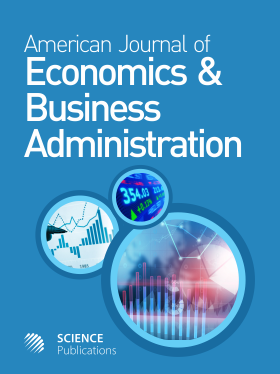Determinants of Non-farm Income Diversification in Developed Villages of Bangladesh
- 1 Tottori University, Japan
- 2 Yamaguchi University, Japan
Abstract
Problem statement: Though the Non-Farm Sector (NFS) has been prioritized in the national policy documents, empirical evidences based on the broader definition of the sector seem to be insufficient about its role both in income diversification and income distribution especially in segmented area of rural Bangladesh. Approach: We use income inequality Gini decomposition method for exploring the role of Non-Farm Incomes (NFIs) and censored Tobit regression for estimating determinants of NFI diversification. We use original data collected from a field survey on individual participation in farm and Non-Farm Activities (NFAs), labor time and household incomes of 214 randomly selected households in four villages of a typical developed rural area, namely, Comilla Sadar Upazila (Sub-district), for the year 2005-06. Results: The NFAs are undoubtedly no longer "marginal" in the case study villages. In addition to supporting the fact that despite having the greater role of the NFS in income diversification and increasing household income, the NFI components do very little or nothing to reduce income inequality, our Gini-decomposition results suggest that further unevenly access to local high return non-farm self-employments and out-country remittance employments would actually aggravate the income distribution. In addition to local NFS, our econometric results give us several important insights for non-local remittance (out-country) and other incomes (transfers): Lower extent of local high-return Household Non-Farm Enterprises (HNFEs) is a reality and landholding is crucially important for financing such HNFEs. For high-return non-farm wage employments and out-country remittance incomes, where the low-income households have limited access, education is particularly important. Participation of female in direct economic activities is negligible. Social capital and local institutions are not significantly active in promoting either local or non-local NFS. Conclusion/recommendations: The future NFS development strategy, thus, should be aimed at promoting high-return HNFEs and creating out-country remittance employment opportunities for the low income households, making local institutions more effective, and increasing female participation in direct economic activities.
DOI: https://doi.org/10.3844/ajebasp.2009.141.149

- 6,813 Views
- 4,911 Downloads
- 18 Citations
Download
Keywords
- Non-farm income
- diversification
- developed villages
- Bangladesh
- income inequality
- determinants
- censored Tobit regression
